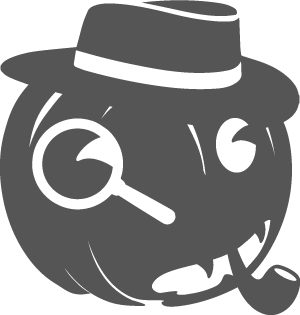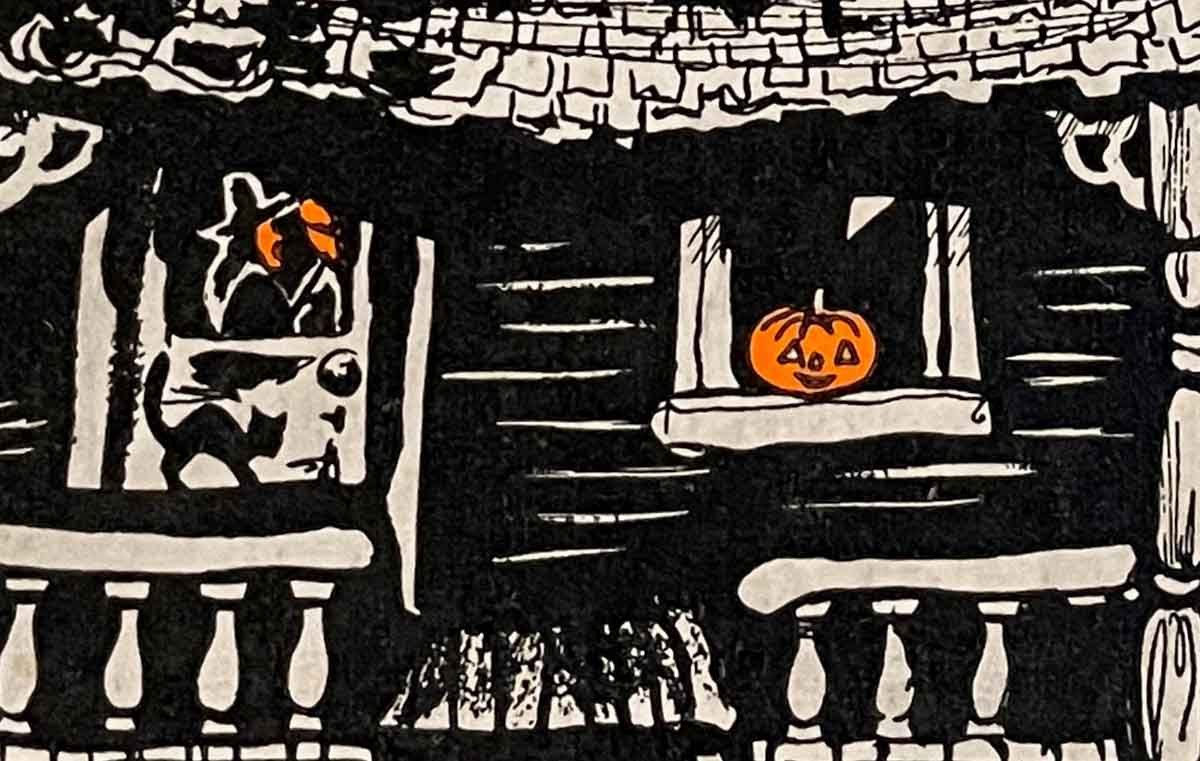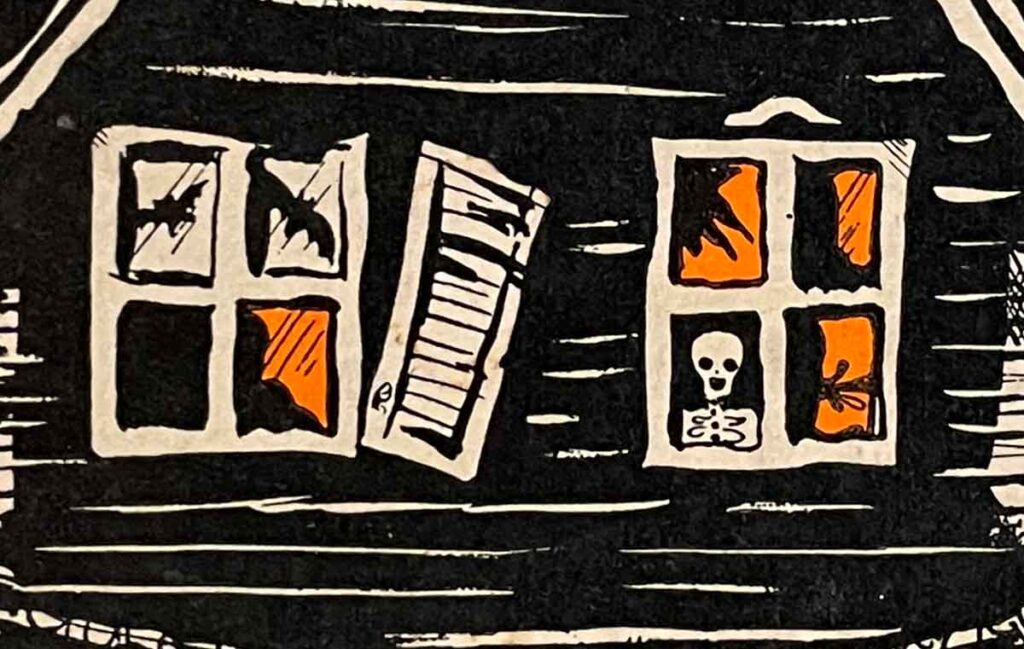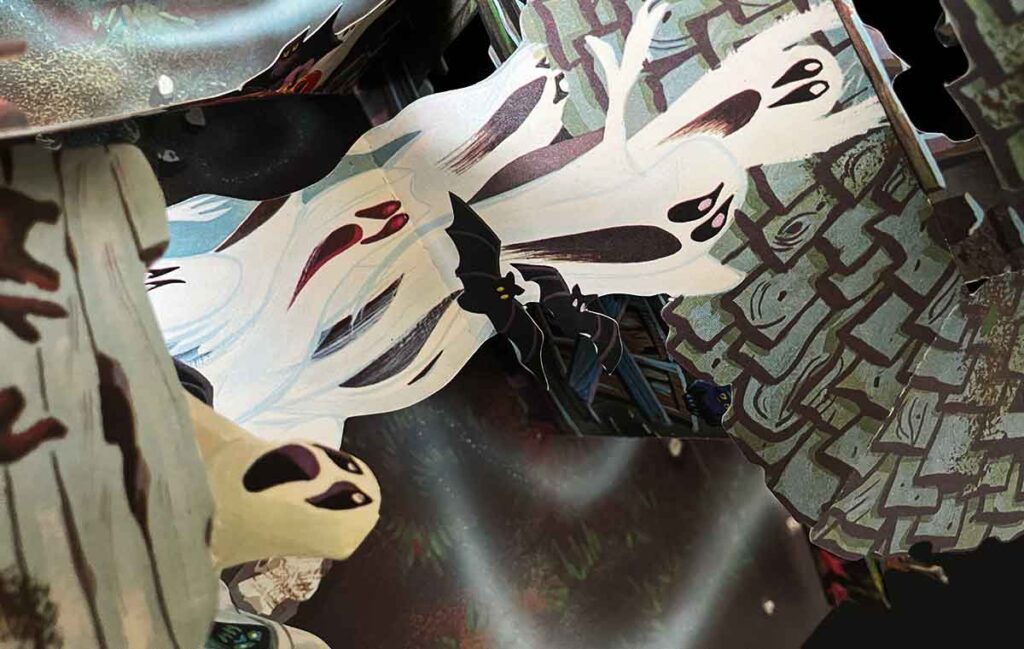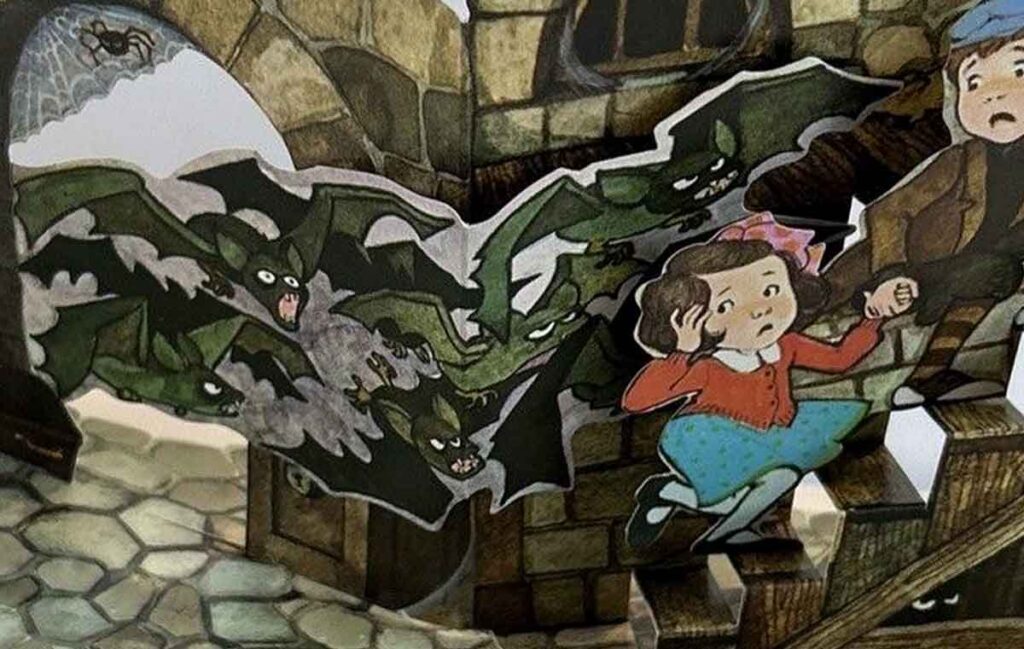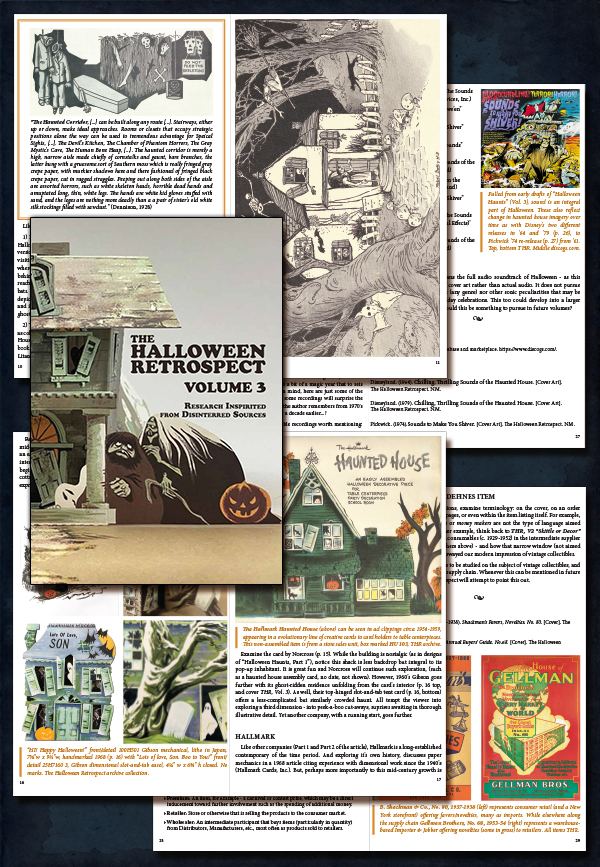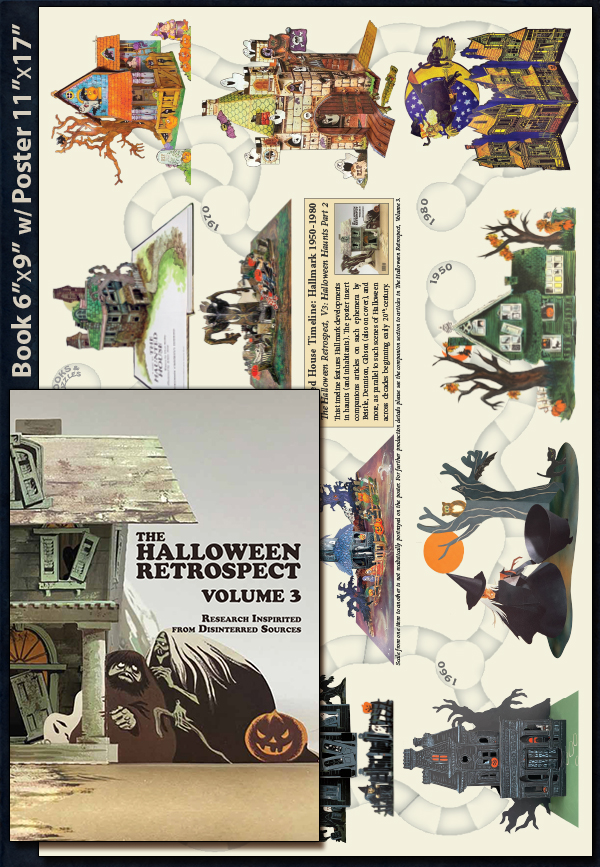Hallmark
Vintage Packaging Part 1:
1950-1959
The archivist-librarian has been seeking data on vintage Hallmark Halloween collectibles now that articles are underway for Volume 3 of The Halloween Retrospect (a research series from THR’s bookstore). And so, as a sneak-peek to future content for faithful readers (noting importantly that this blog is supportive rather than a reproduction of book content), the following entries offer behind-the-scene notes toward building a better timeline for Hallmark collectibles – particularly that company’s table-centric party ephemera circa 1950-1980. In so doing, as with “Decrypting Dennison: Serial Number Guide Featuring Autumn Publications” (THR, V2), it helps to look beyond Halloween to efforts throughout the year.
The review of Hallmark vintage Halloween includes:
Proceeding to the 1950’s era some general notes for Hallmark include:
1) The crown logo (a version much like that current) is established in the 1950’s
2) Matched sets (like Haunted House below) date before the Plans-A-Party campaign (1960).
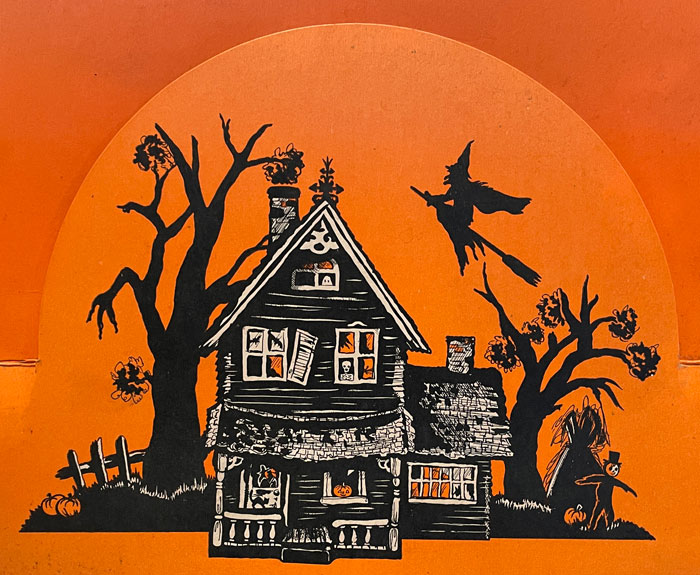
Hallmark’s Haunted House 100 H 103 top graphics of a store-ready promotional container are shown (above) box measuring ~16″x14″x3″ termed Haunted House Co-ordinated Unit HU 103. By labeled contents it is meant to include 12 full sets of centerpiece, invitations, place cards, tally cards, and nut cups. This item located in The Halloween Retrospect collection. Some details from the design appear on Instagram@halloweenretrospecs.
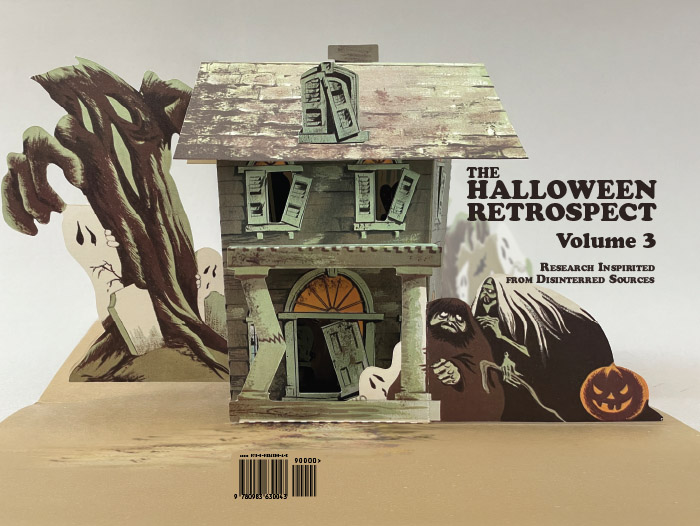
NOTE 1: To create a packaging timeline, THR worked with numerous sources – including The Hallmark Archives, and tons of newspaper clippings together with tons of online sales data – for bits of helpful info. Therefore, what follows is the author’s own patchwork impression of style changes across time. It is not Hallmark’s claim of market availability in North America.
NOTE 2: Unless noted as a physical on-hand item, the images in this timeline blog series of Hallmark ephemera are digital re-creations of some rough-shod examples. it is decided that absent marks, tears, general aging, etc. it will be easier to offer uncluttered representations.
Beginning the 1950’s:
ORIGINal Mailers
If you have seen many Hallmark cards circa 1940’s-1950’s, you may have noticed card examples, such as one that contained inserts of train boxcars as press-outs to be assembled by the receiver. Although this author is uncertain which hit the market first, it appears the company’s creatives staff expanded upon this idea to introduce the first in a series of centerpieces (starting with a natural progression of card holders) for holiday occasions.
Characteristics of these include:
1) Printed information contained on the front with an empty reverse.
2) Monochrome line illustrations are used to represent the contents.
3) To/From address is integrated onto the front.
4) Postage is printed (with an amount due sealed or unsealed).
5) Assembly required.
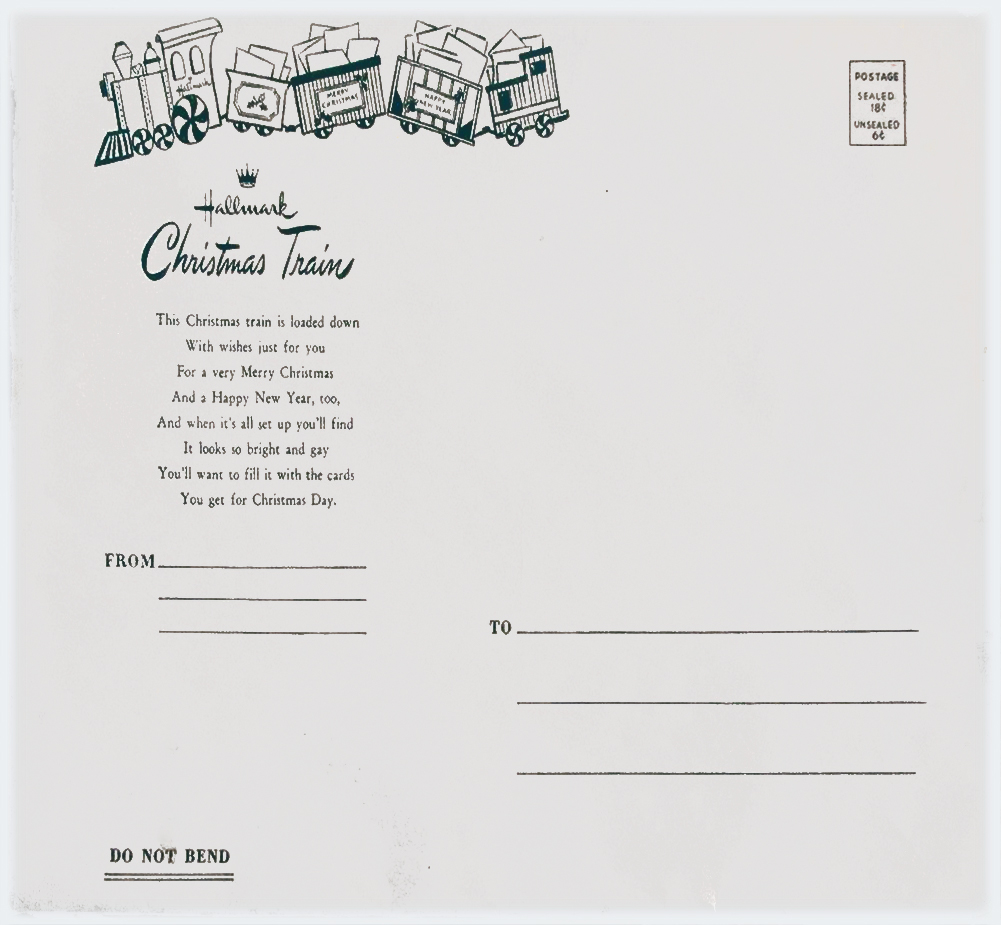
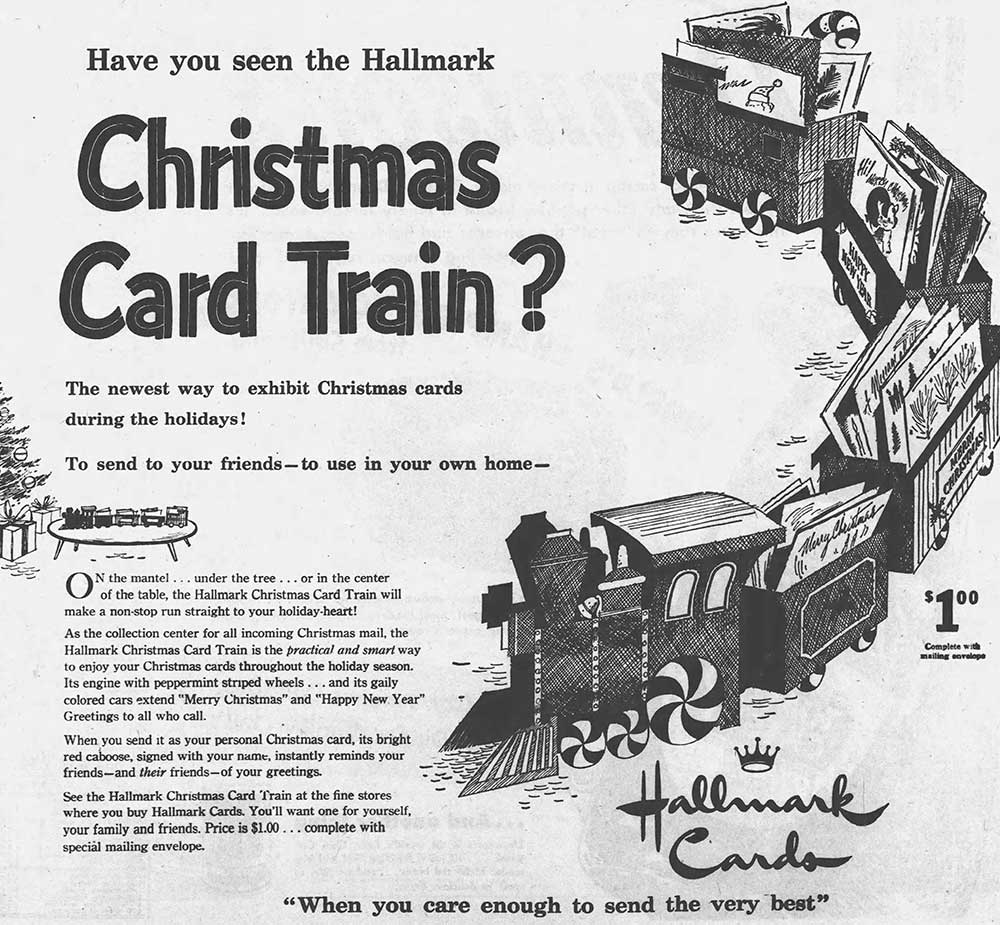
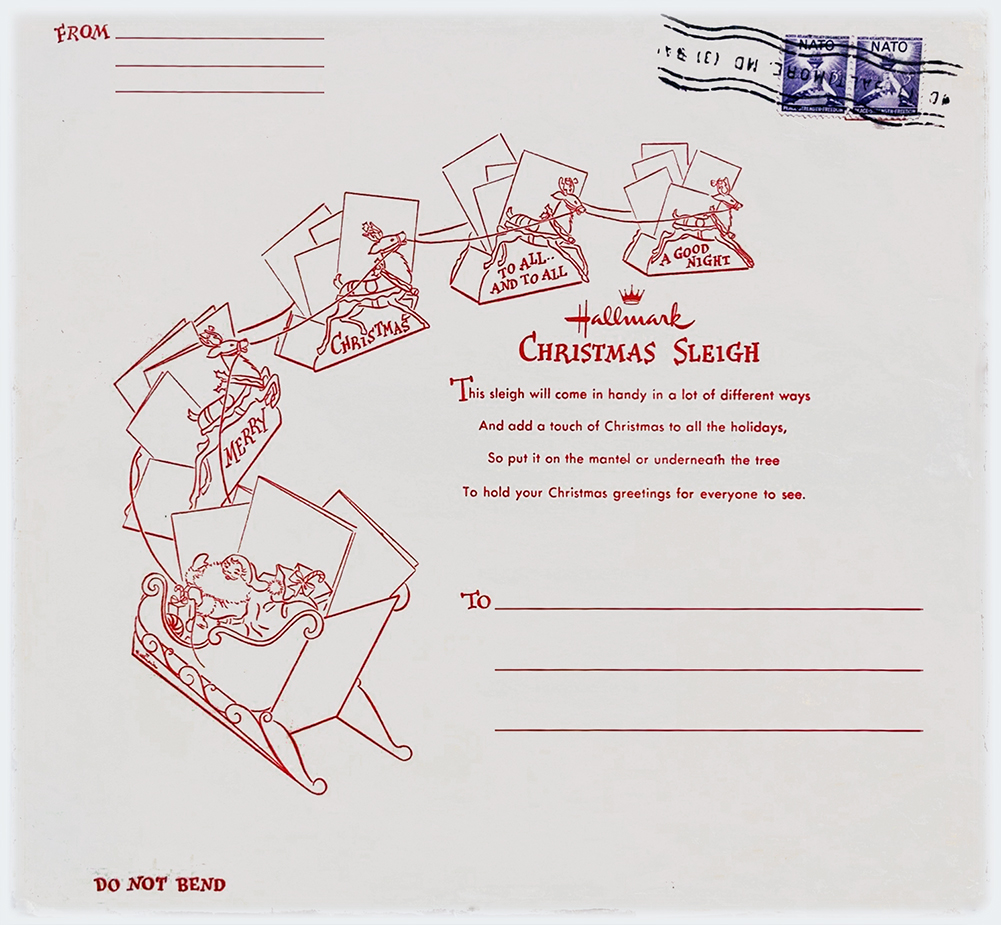
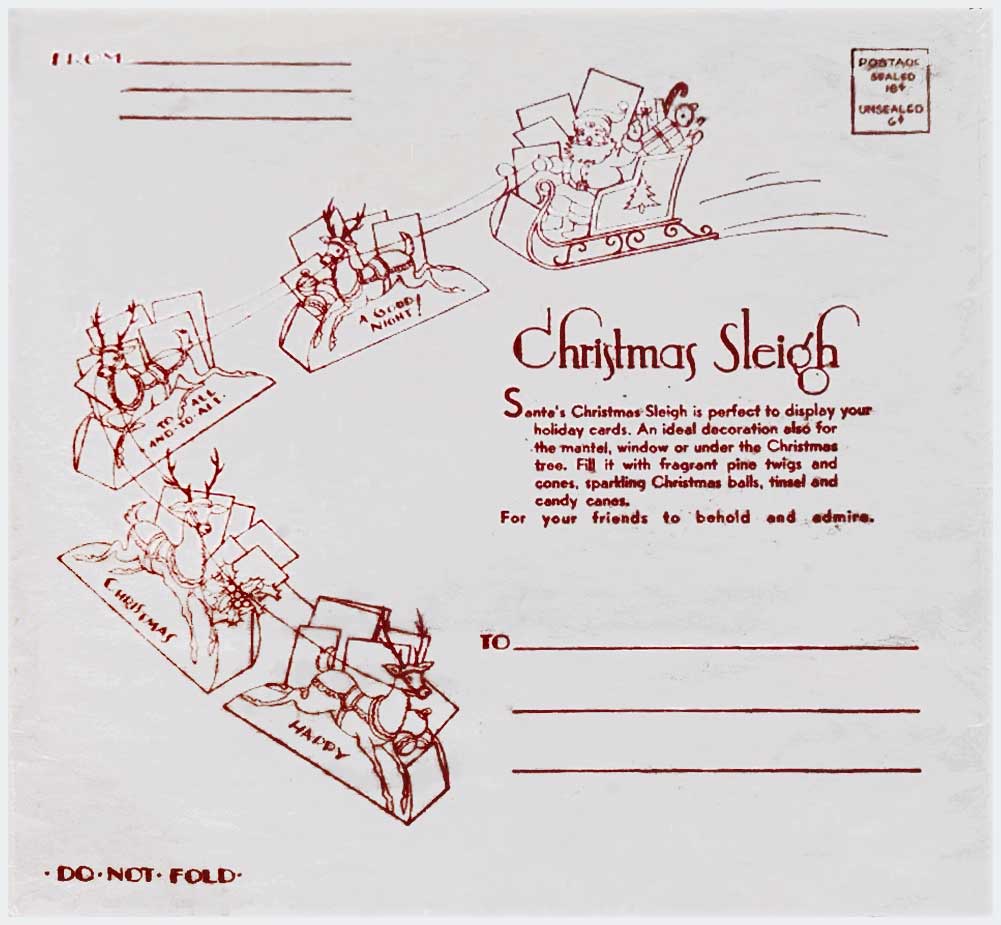
THR has spotted the Christmas Train (1st image) in ads dating 1951 (2nd image – Fort Worth Star Telegram) up to 1955. Also, Hallmark’s Christmas Sleigh (3rd, 4th image) has been spotted in ads dating 1952-1955 both in similarly styled mailers (noting that the 2 versions may not be specified in an ad). Envelopes are digital representations.
Of course, the envelopes are large as necessary to hold the various non-assembled diecuts as a flattened group – but this author has not seen measurements offered for the envelopes themselves. Until otherwise noted, it might be assumed these came in variable sizes as needed to enclose the differently-sized contents – a trait that will be seen as the products develop.
Early to Mid 1950’s:
Two-Sided Mailers
The next update in package design continues the mailer concept while entering a much more colorful phase. Information is now distributed about front and back, but most noticeable is an image (sometimes spilling over to the reverse side) as a fairly faithful representation of internal contents (although not three-dimensional).
Characteristics for these include:
1) Printed information spreads across front and reverse sides.
2) Multi-color illustrations offer a 2D glimpse of the contents.
3) To/From address appears on the back.
4) Postage is printed (with an amount due sealed or unsealed).
5) Assembly required.
6) Set price – added in last example, Halloween Cat (below).


The digital representation Christmas Stagecoach (above two images) is spotted 1953 and 1954 in store advertisements though again this may not be fully representative of complete years of availability.
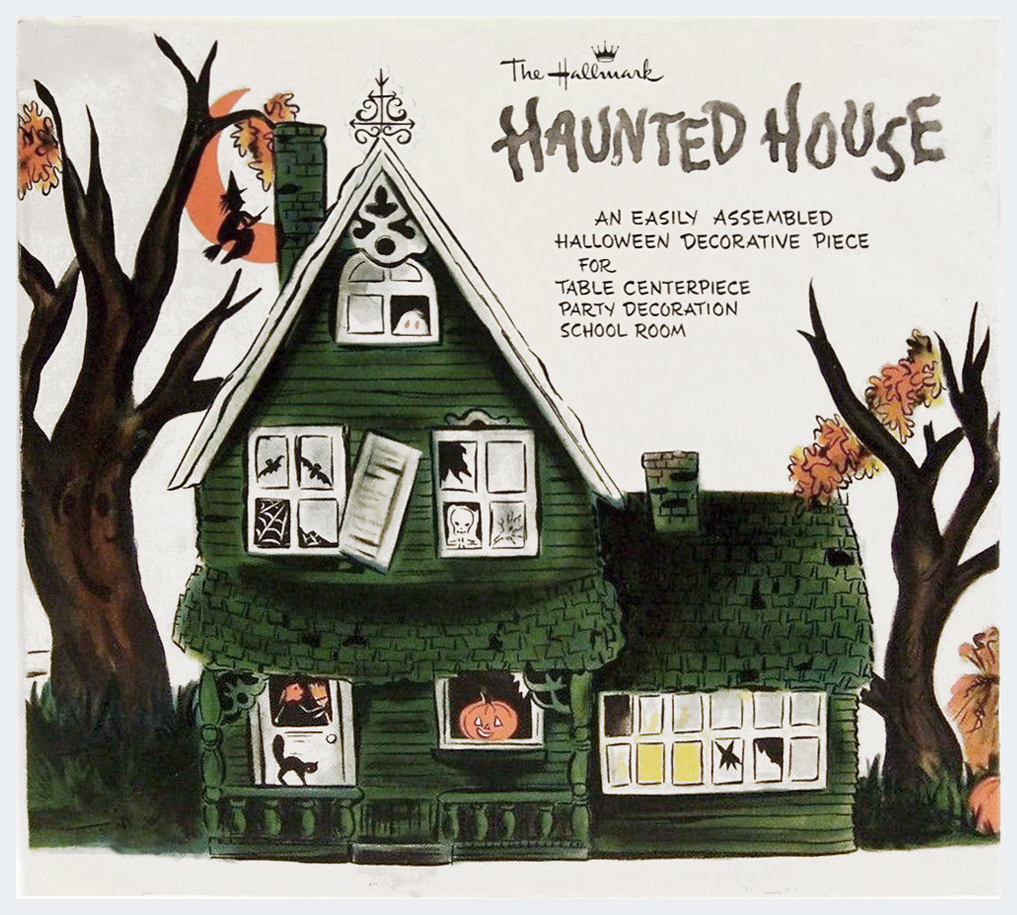
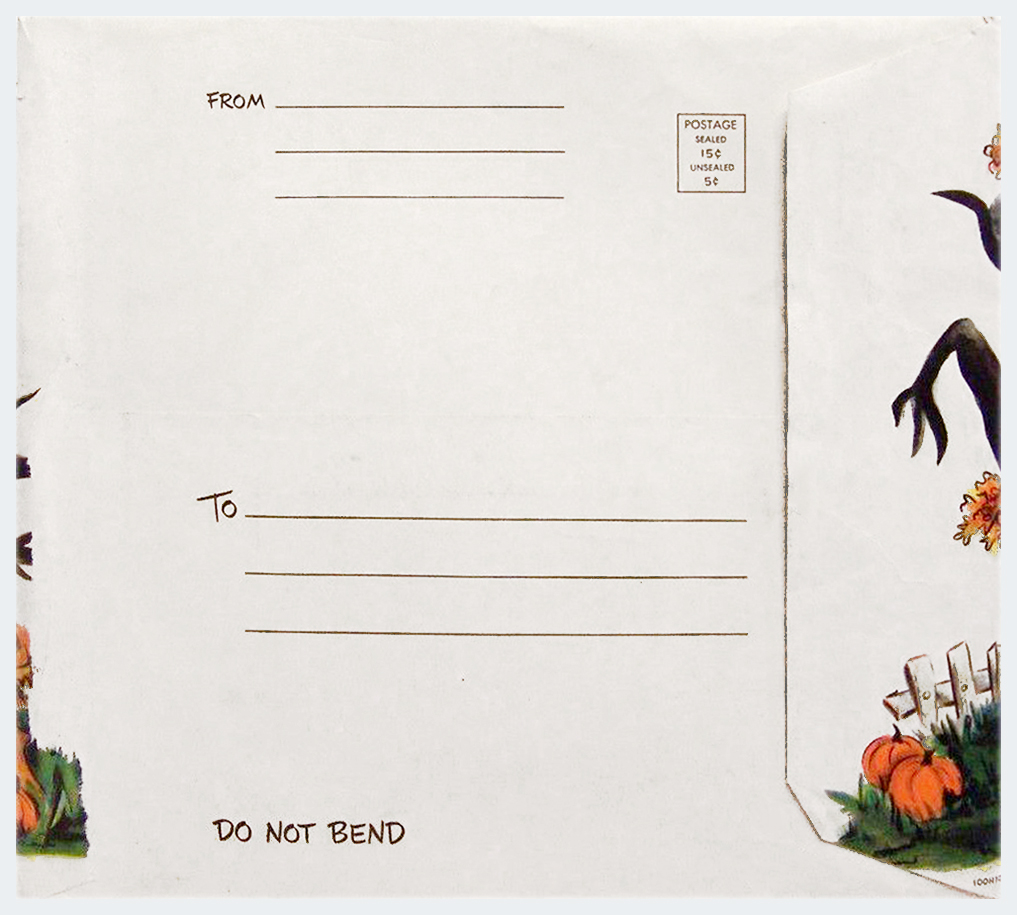
The Hallmark Haunted House (top two images) dates per ads circa 1954 to perhaps as late as 1958-59 (?) since ads may not be specific when a new designs overlaps one older. The envelope measures ~11.25″ w x 10″ h in The Halloween Retrospect archive (non-assembled).

The ad (above) is run by Shaw Stationery Co. (Klamath Falls, Oregon – Sun, Oct. 09, 1955) noting The Hallmark Haunted House (in the previous two images) sold out the first year. Some excerpts from the design of the item appear on Instagram@halloweenretrospecs. Also note mention of Halloween Cat (below).
Hallmark becomes increasingly prolific (during the era of this style envelope) with items here seeming to overlap market availability across the year’s holiday line-up (as in the ad above). THR does not have a full spreadsheet (at this stage in research), and it is unknown who might provide an exhaustive list of items during this period – with others including (to name but a few) Easter Train, May Baskets, Nativity Scene, and A Rocket Ship for You.
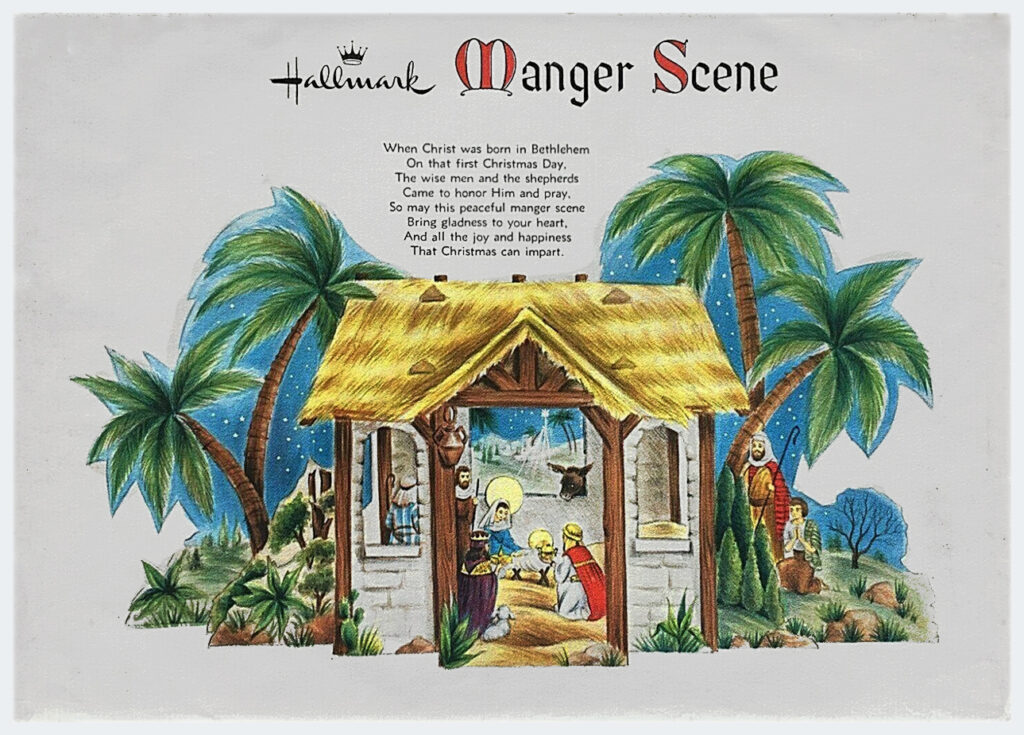

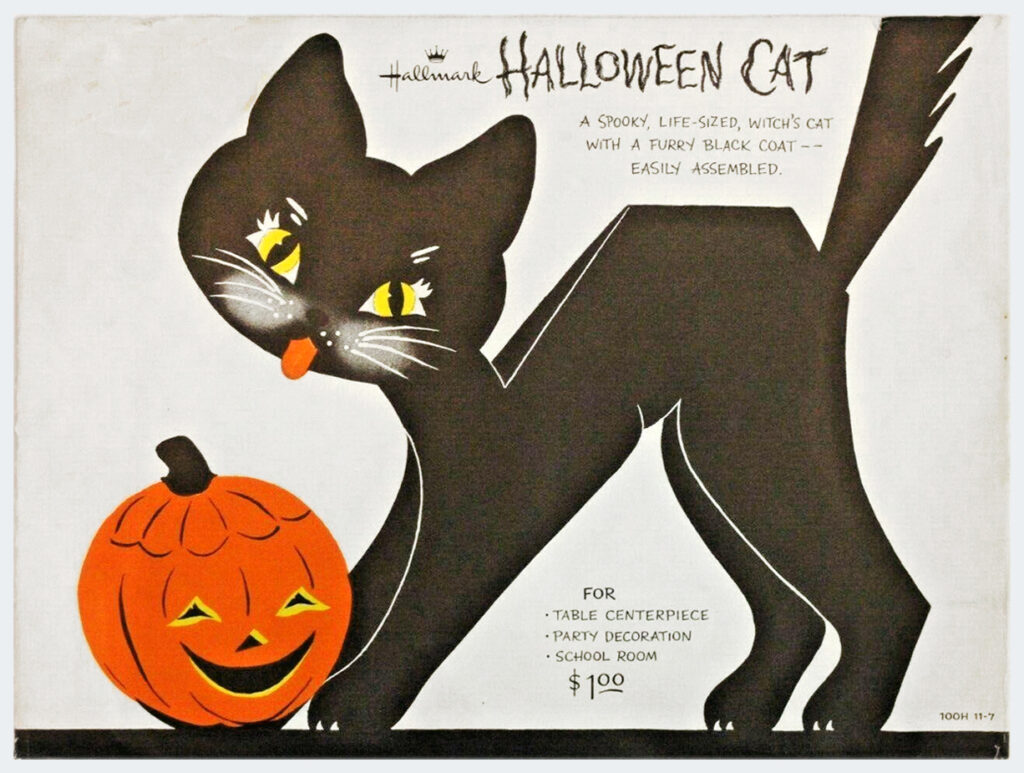

Manger Scene (top two images) has been spotted in an ad from 1955, while Halloween Cat (lower two images) has been spotted 1955 (as new in ad above) to 1958. (Items as digital representations). These envelopes (directly above) appear designed around the time of Christmas Stagecoach or Haunted House, yet the flap is either missing spill-over imagery or the back offers related elements of the scene – (again noting dates may not be all inclusive of full availability).
Mid to Late 1950’s:
Photo-Front Mailers
The next phase sets the stage for Hallmark’s party decoration packaging for many years hereafter – mainly, a white-bar area of descriptive information abutting a photograph of the item decoratively styled for the event. Otherwise, they are descendants to those previous, with similar attributes such as postage data for sender/receiver (on reverse) and price.
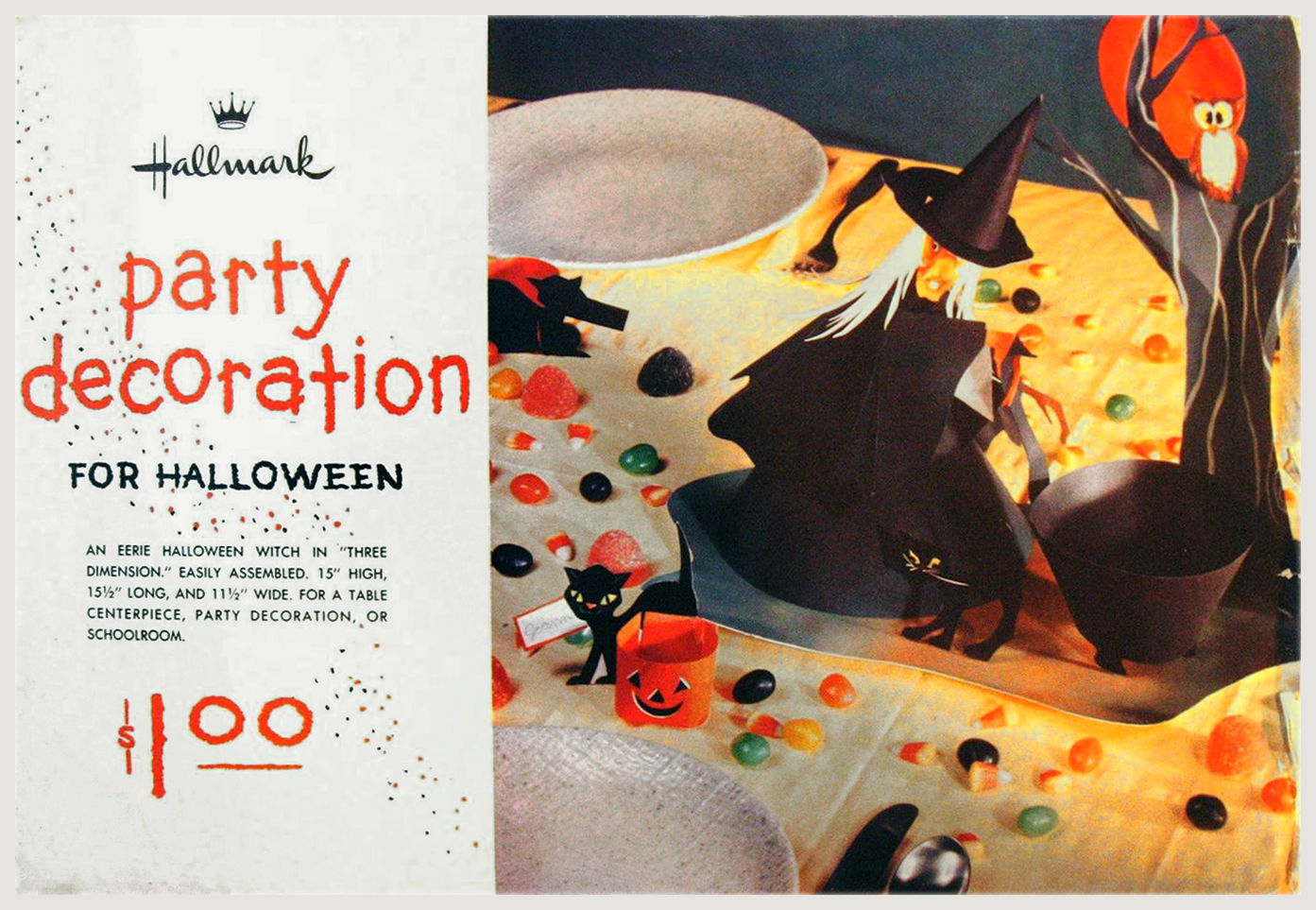

Hallmark’s Party Decoration for Halloween loosely titled as “Eerie Witch” (above, item front and reverse) is found in ads of 1956 and 1958 (likely filling years between). A non-assembled example in The Halloween Retrospect collection is a large mailer at ~15.75″ w x 10.75″ h, while the images used here are digital.
As previously indicated, Hallmark’s creative team is by this time an unstoppable engine of ideas – dreaming up a large number of thematic party ideas for Christmas, Easter, including Alice In Wonderland (aired on the Hallmark channel around the same year).
Characteristics for these include:
1) Printed information distributed about front and reverse.
2) Color photos as styled displays of the internal contents.
3) To/From address appears on the back.
4) Postage is printed (with an amount due sealed or unsealed).
5) Assembly required.
5) Price is printed in a font similar to title.
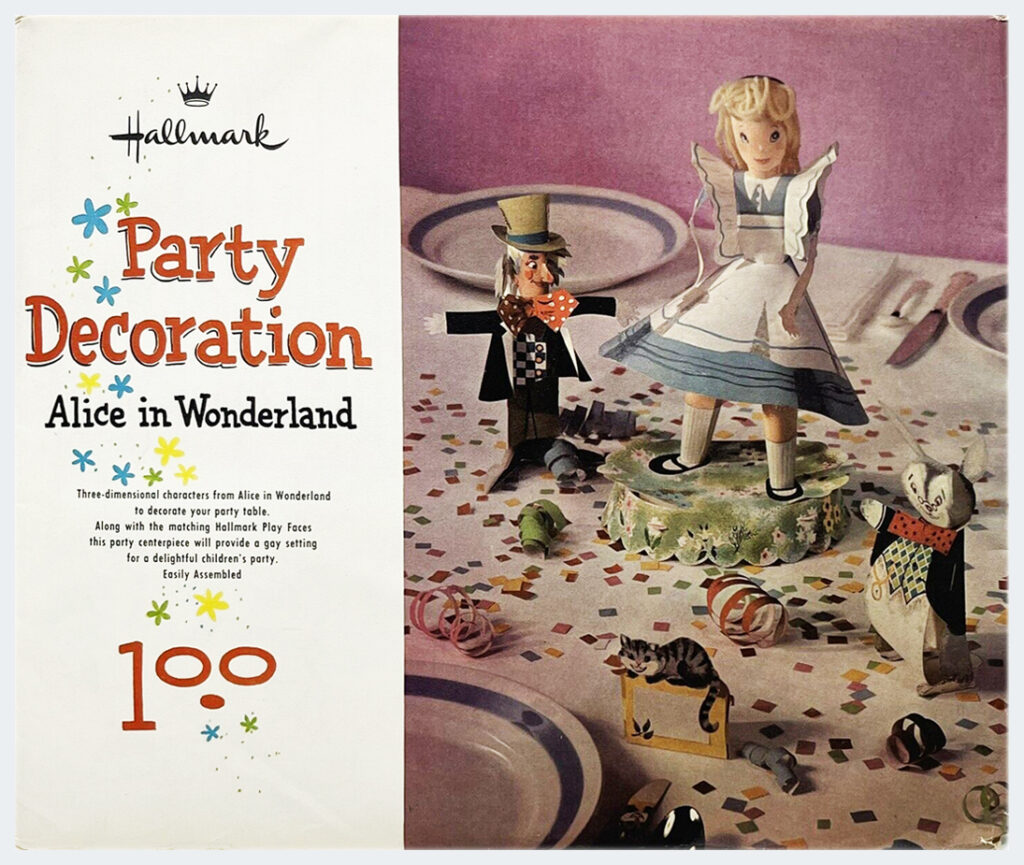

Party Decoration Alice in Wonderland (above two images) is exemplary of the white-bar style and is spotted in 1956 around the time Hallmarked aired a film version. (Digital image).
Other products with the sidebar style of envelope (above) include: Easter Party, May Baskets for Children, and Christmas Angel.
Later, as we near the next decade’s standard, the header moves to the top of what is still a horizontal package with New Year Party Decoration (Pink Elephants) Cupid’s Carriage, Easter Parade, Valentine Party Decoration (Valentine Train Card Holder), as well as Christmas Sleigh and Reindeer.
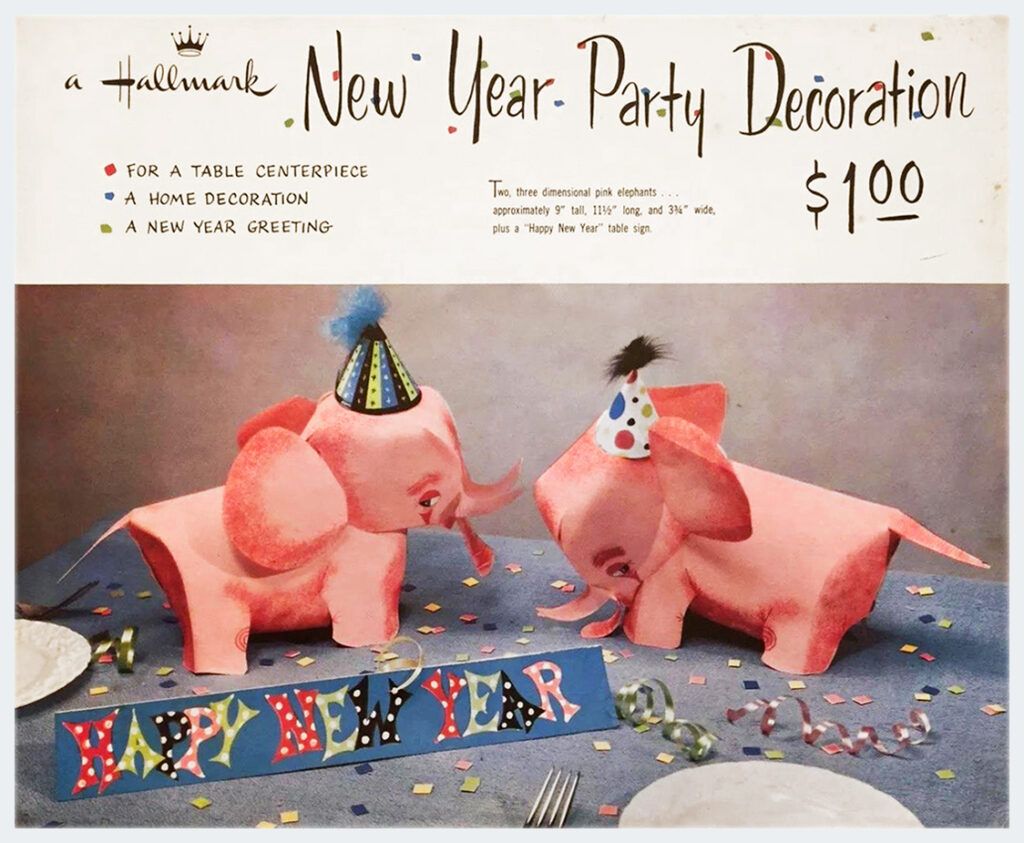

New Year Party Decoration, or “Pink Elephants” (above two images) is exemplary of the white-bar moved to the header of the horizontal envelope (Digital representation).
Late 1950’s:
Party Set Anomaly
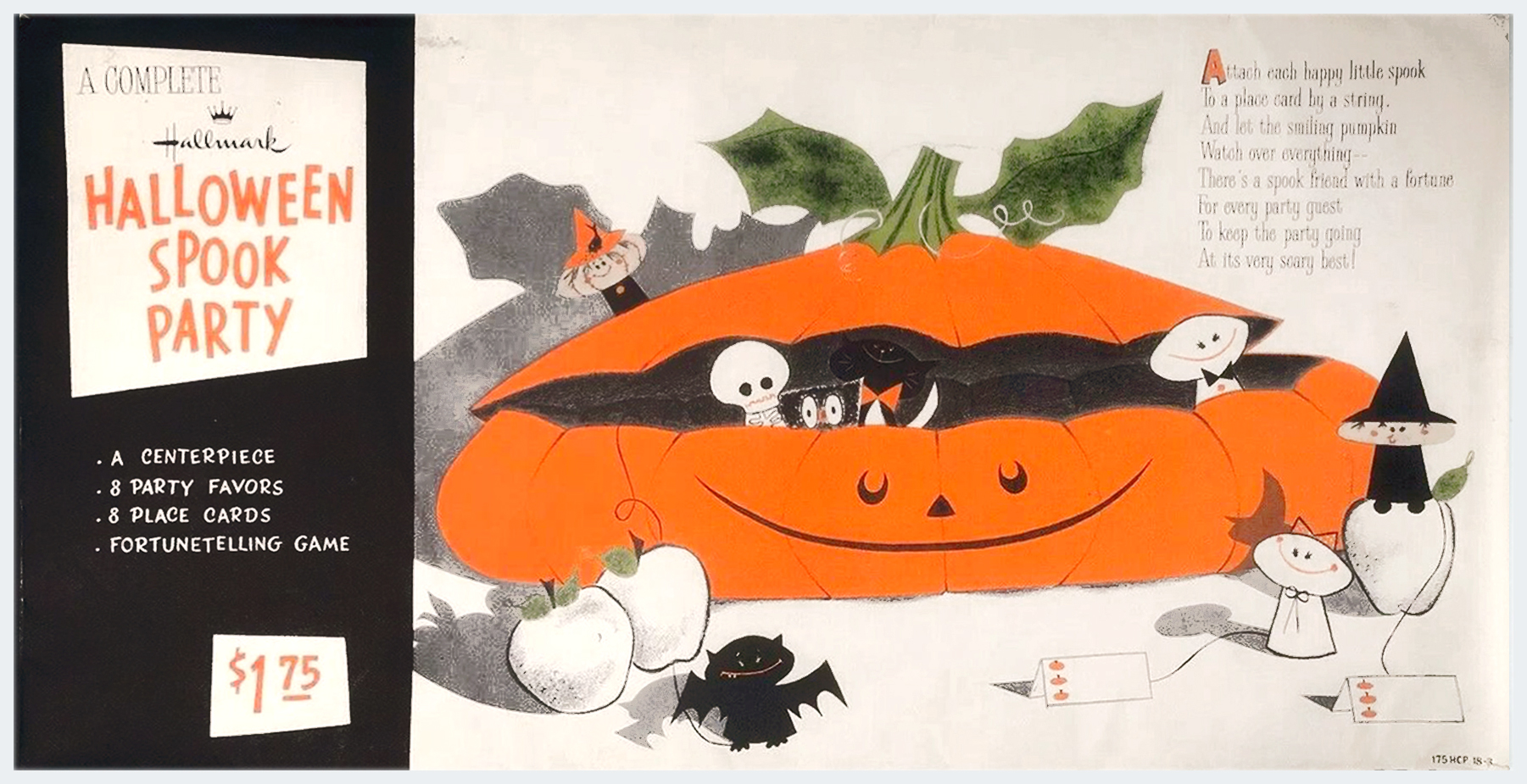
Of course there always has to be that odd anomaly! The Halloween Spook Party (seen in 1958, 1959, and with vague mention perhaps in 1960) really mixes up the elements seen so far. It has a layout like “Eerie Witch” and yet the bar to the left side is black. And, unlike “Eerie Witch” hearkens back to an earlier era with a fancifully arranged set as an illustration, not a photograph. What is more common for the time period, is that the reverse of this item no longer offers itself as a purchase to be mailed.
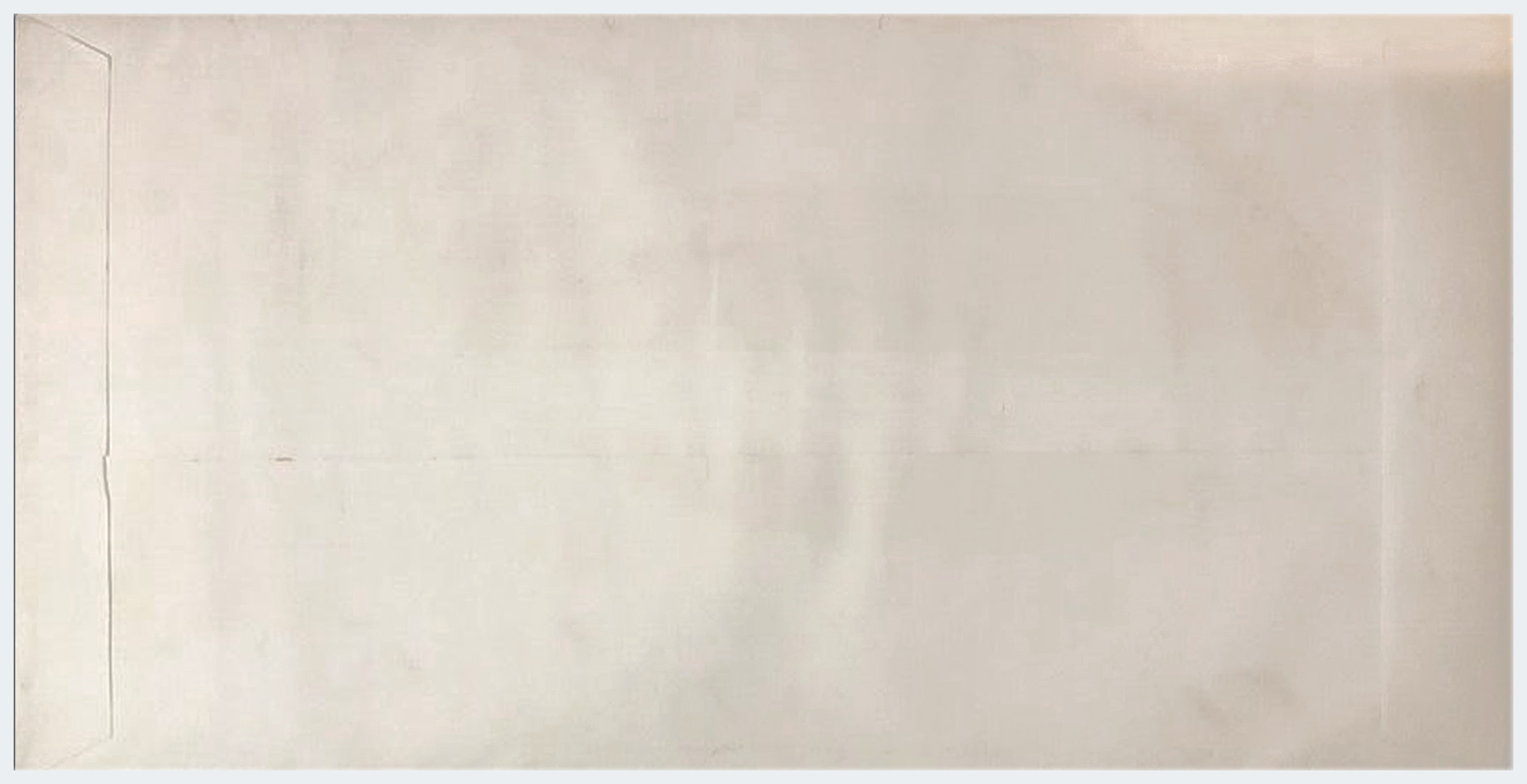
Hallmark’s Hallowe’en Spook Party (above two images) dates per ads circa 1958 to perhaps as late as 1961 per the name mention in an advertisement of that year. (Digital representation).
Into the 1960’s:
The Vertical Standard
At end of the 1950’s, we begin to see an envelope layout that in many ways becomes a Hallmark signature (with variation of course) for following decades. Though limited ad appearances for “Bewitching Sorceress” (below) make it difficult to decipher more exacting dates, nevertheless this is a great segue for designs which come next – when (per Hallmark) the 1960’s unveil the Plans-a-Party campaign with products in the same layout. As we will see in the next blog entry, some products might appear in updated packages, with “Plans-a-Party” added. So, does the item below (and those like it) come before or is it concurrent with others of the next decade?
Coming up next: Hallmark Halloween: 1960’s.
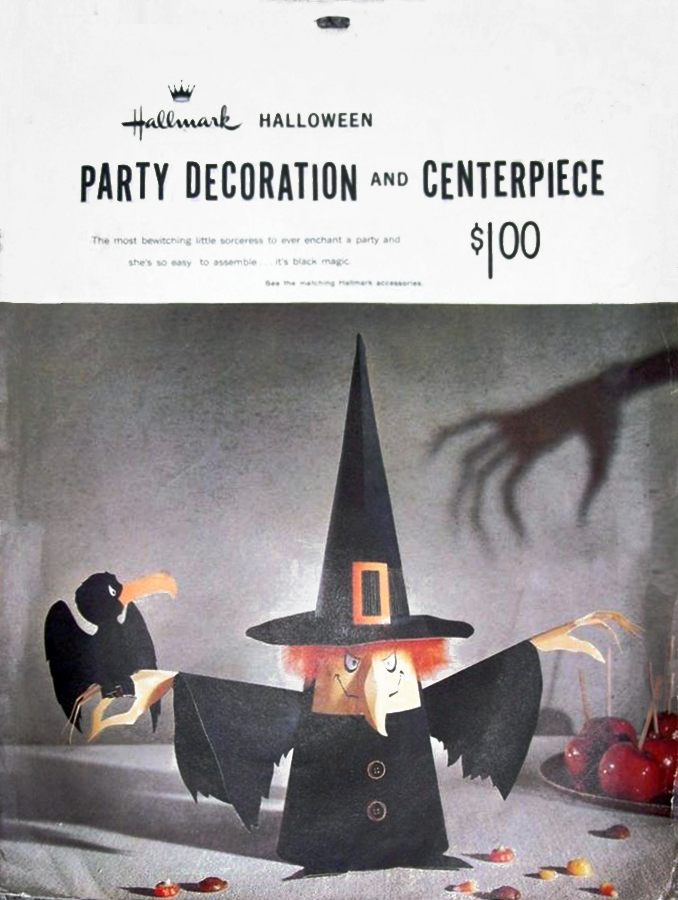
Party Decoration and Centerpiece, or loosely “Bewitching Sorceress” with vulture, has not been seen by THR with a direct mention however a drawn spot-graphic appears in an ad from 1961. She appears to be a threshold item for the next decade with the Plans-a-Party line (released per Hallmark for the Valentine’s Day season of 1960). More threshold items will appear next entry. (Digital representation).
The review of Hallmark vintage Halloween includes:
The Halloween Retrospect
Volume 3
Here is a link to more website info about The Halloween Retrospect (a new research-based guide on the vintage market of for Halloween collectors) and here is a direct link to The Halloween Retrospect bookstore to purchase a copy via Etsy checkout.
Follow THR on Instagram @halloweenretrospecs
Follow THR on Facebook Halloween Retrospect
